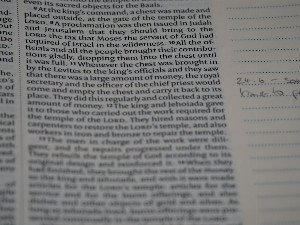Mia Åkerfelt
In between the neighbours
Introduction
In between the neighbours. Undersöker hur Bostadsföreningen för Svenska Finland använde boendeideal och modernistisk arkitektur för att stärka finlandssvensk identitet och motverka assimilering under 1900-talet.
Abstract
Bostadsföreningen för Svenska Finland arbetade för bättre boendeförhållanden bland finlandssvenskarna under medlet av 1900-talet. Samhällsklimatet efter inbördeskriget och språkstrider bidrog till politiska försök att ena finlandssvenskarna. Föreningens typritningar till egnahemshus skulle bidra till att stärka den finlandssvenska identiteten, som upplevdes vara hotad. Syftet med artikeln är att undersöka hur boendeideal användes för att konstruera en kollektiv identitet för en minoritet. Frågeställningarna berör vilka hot man ansåg att riktades mot finlandssvenskarna och hur arkitektur kunde motverka dessa. Bostadsföreningens agerande förstås genom identitetsprocessteori och perspektiv på hur arkitektur används för att konstruera nationella identiteter. Bostadsföreningen uppfattade bostäder utformade enligt ett modernistiskt ideal, som en lösning på ett politiskt och ideologiskt problem. Om finlandssvenskarna hade moderna och effektiva hem skulle de inte vara så benägna att sälja sina gårdar till finskspråkiga och sedan flytta till städer där de assimilerades in i den finska kulturen. Mobilitet uppfattades i det här sammanhanget som ett hot eftersom den ledde till förlust av väljare i politiskt viktiga områden. En modernistisk arkitektur kombinerad med lokal folklig byggnadstradition skulle bidra till att göra den finlandssvenska landsortsbefolkningen stolt över sina släktgårdar och få dem att stanna i hembygden, bevarandes den svenska jorden för kommande generationer
Review
This article presents a fascinating and timely investigation into the complex interplay between housing, architecture, and the construction of collective identity for a minority group. Focusing on Bostadsföreningen för Svenska Finland during the mid-20th century, the study aims to unravel how residential ideals were strategically employed to forge and strengthen a Finnish-Swedish identity in a period marked by post-civil war societal tensions and language disputes. The abstract clearly articulates the central problematic: the perceived threat to this identity and the proactive role architecture was envisioned to play in counteracting it. The theoretical grounding, drawing upon identity process theory and perspectives on architecture's role in national identity construction, appears robust and promises a nuanced analysis. The article effectively outlines the specific societal challenges – namely, the risk of assimilation due to Finnish-Swedes selling farms, migrating to cities, and losing their distinct cultural and political presence. What emerges is a compelling argument for how modernist architectural ideals, thoughtfully integrated with local building traditions, were conceptualized as a solution to a multifaceted political and ideological problem. By fostering pride in ancestral homes and encouraging rural populations to remain, these designs aimed to stabilize communities, preserve land, and thus safeguard the Swedish-speaking electoral base. The perception of mobility as a threat, rather than progress, is a particularly insightful angle. The abstract provides a compelling snapshot of a rich historical and cultural investigation. To fully capitalize on this intriguing premise, a complete paper would benefit from elaborating on the specific characteristics of the "modernist ideal combined with local folk building tradition" – what did these *typritningar* (standardized designs) concretely look like, and how did they visually articulate this dual identity? Furthermore, exploring the actual reception and impact of these housing initiatives on the Finnish-Swedish population would significantly strengthen the empirical contribution. Did the designs effectively stem out-migration and assimilation, or were there unforeseen outcomes? This article promises a significant contribution to studies of national identity, minority politics, and architectural history, offering valuable insights into how built environments are deeply intertwined with cultural preservation and political strategy.
Full Text
You need to be logged in to view the full text and Download file of this article - In between the neighbours from Finskt Museum .
Login to View Full Text And DownloadComments
You need to be logged in to post a comment.
Top Blogs by Rating
The Invisible Architects: Are...
By Sciaria
Unmasking the Macabre: The Dar...
By Sciaria
Unseen Engineers: Nanotech's B...
By Sciaria
Favorite Blog
Unseen Engineers: Nanotech's B...
By Sciaria
Beyond the Stereotype: Unpacki...
By Sciaria
The Unspoken Wisdom: Embracing...
By Sciaria
Related Research
Critical review: mesguich, véronique (2024). marketing en bibliothèque et autres milieux documentaires. Éditions asted. isbn 978-2-923563-57-2
Analisis nilai karakter wayang punakawan sebagai media pembelajaran bahasa jawa di sd
Causality and intentionality in the explanations of diachronic linguistic
Share
Notice Board
- MANAGEMENT OF CHARACTER EDUCATION IN THE TA'DZIM TRADITION : STUDIES IN THE DAYAH MUDI OF THE GREAT MOSQUE OF SAMALANGA
- PERSPECTIVAS DE DIÁLOGO ENTRE AS POLÍTICAS DO ATENDIMENTO EDUCACIONAL ESPECIALIZADO (AEE) E DA ESCOLA EM TEMPO INTEGRAL
- ANALISIS DAN PERENCANAAN PERGANTIAN SHEET PILE PADA JALAN GONDANG-LENGKONG KEC.GONDANG KAB. NGANJUK




